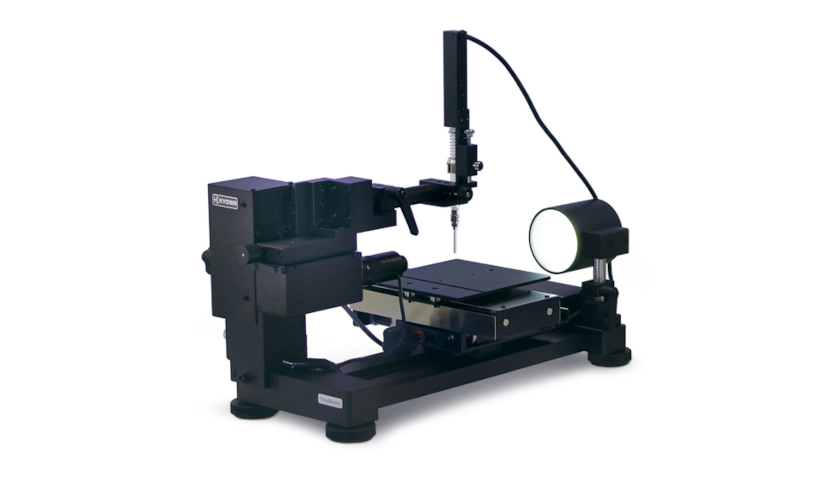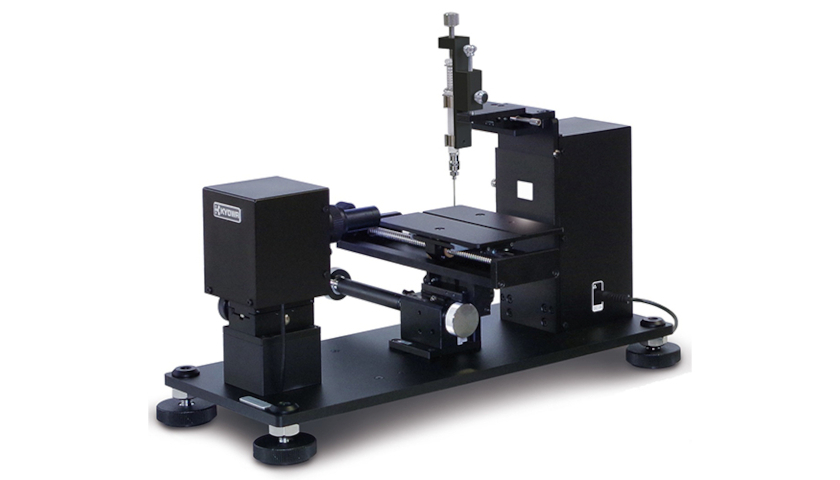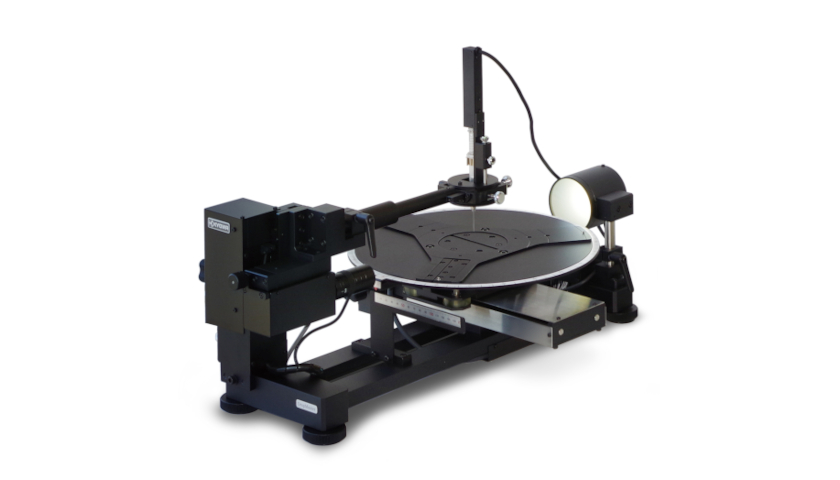Evaluation of the liquid removability
Background
When evaluating water repellency, contact angle evaluation on a horizontal surface comes to mind. However, the primary purpose of water repellency evaluation is very often liquid removal. It is challenging to evaluate liquid removal by only considering the contact angle on the horizontal surface. Therefore, evaluation by hysteresis, which is the difference between the advancing and receding angles, and adhesive energy is practical.
Problems to be solved
Although it is generally known that the contact angle hysteresis and adhesive energy are positively correlated, evaluating the actual sample in a measurement situation close to the on-site evaluation is still preferable.
Measurements and results
The advancing and receding angles can be evaluated using the extension/contraction and roll-off methods. We used the roll-off method and our contact angle meter model DM-500, a legacy instrument, mounted on an external tilting stage under the following conditions:
| Liquid sample: | 3 µL to 20 µL of distilled water |
| Solid sample: | Water-repellent materials A, B (applied to glass slide substrate) |
| Room temperature: | 25 ±2℃ |
| Relative humidity: | 50% |
A low advancing angle can assess the ease of liquid wetting and spreading. In contrast, a low receding angle can evaluate the ease of liquid retention.
Low hysteresis, the difference between the advancing and receding angles, indicates that the liquid is easy to remove.
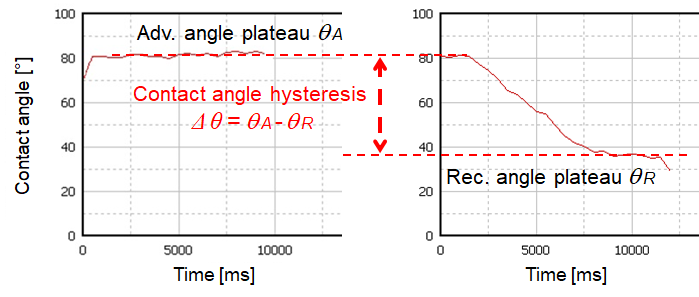
Figure 1 – Advancing and receding contact angle
Generally, the roll-off angle of the liquid droplet depends on its amount. Hence, when the amount of liquid is large, it slides down at a shallow inclination, and when it is small, it slides down at a high angle (Fig. 1).
Due to the difference in the properties of the solid sample surface, evaluating the liquid amount together may be challenging, and evaluation by the roll-off angle becomes impossible. In these cases, we encourage comparison by adhesive energy.
In the review using the adhesive energy attached to our sliding method measurement, the adhesive energy is obtained by dividing the force of gravity of the horizontal component at the inclination angle at which the droplet begins to slide by the perimeter of the droplet in contact with the solid surface. With this evaluation of adhesive energy, it is possible to compare results even when measuring different liquid volumes.
As long as there is adhesive energy between the solid and the liquid, there are cases where it does not roll off even if it is tilted 90º. In this case, it is possible to determine at what liquid amount or higher the roll-off occurs by evaluating adhesive energy rather than hysteresis (Fig. 2 and 3).
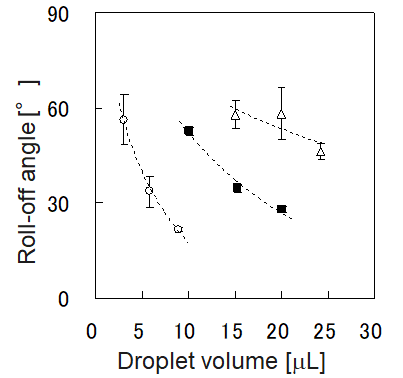
Figure 2 – The relation between the droplet volume and the roll-off angle
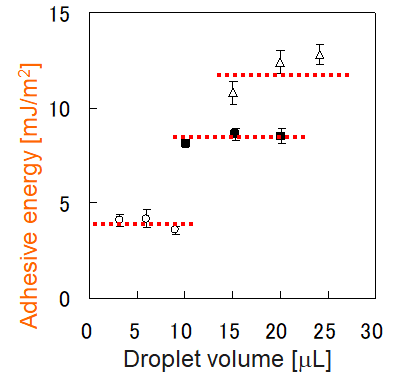
Figure 3 – The relation between the droplet volume and the adhesive energy
Conclusion
Our contact angle meter series, DMs-401 and higher (except the DMo-902WA), mounted on an external tilting stage, is suitable for evaluating liquid removability under actual usage conditions, ensuring the best reliability and product quality.
Related Products


Visit our Virtual Showroom
to learn more about our company's products


